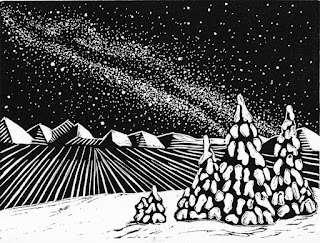To start, I have "The Storming of the Bastille" (1789) by Jean-Pierre Houël. It is a painting made to depict the storming of the Bastille- a medieval fortress- by revolutionary insurgents. The importance of the insurgents taking the Bastille cannot be understated, as it was a slap across the face of the French nobility. Commoners taking such a fortified stronghold gave them not just a strategic upper-hand, but it also solidified the idea of the nobility being at the mercy of the commoners. In terms of the art itself, there's something so striking about the juxtaposition of the fortified old bastion and the contemporary weapons and clothing such as the strikingly colored uniforms and the cannons and muskets. It's gritty and hazy, which conveys the mayhem that the battles created. All the while, it represents the hard-fought efforts of the revolution and the changes in the French power that came with it. 
Moving aside from the revolution and war that
"The Storming of the Bastille" represents, I have a painting called
"The Hay Wain" (1821) by John Constable. To me, this painting represents both the morality of the Classical Era and the growing importance of the middle class at the time. Choosing to focus on such a benign scene- something so ordinary in commoner life- stands out from the earlier paintings of gaudy castles and extravagantly dressed and banqueted nobility. Instead, the humble scene shows commoners going about their lives- travelling by carriage and washing their clothes in the river behind their rustic house. It shows the importance of a meager existence. Though it may be eager, it's what so many endure which lends it an air of nostalgia and hospitality.
To finish things off, I'll be showcasing the
"The Death of General Warren at Battle of Bunker's Hill" (1775) by John Trumbull. Trumbull's painting strays from French history, as it instead depicts the Battle of Bunker Hill, an event which transpired during the American Revolution. Taking place in Boston, Massachusetts, it depicts the death of the famous founding father Joseph Warren at the hands of British soldiers. This painting shows the resilience the American people had, as well as the sacrifices they had to make in their battle for independence. It also displays the bloodshed that the conflict created, with bodies of all sides littering the foreground. Trumbull was a primary witness of the conflict, watching the battle unfold and later painting this piece about it. I find it interesting to think that there were ordinary people watching such events unfold- people who lived not only to see history unfold, but to document it and share it with generations to come.






Hi! I enjoy your choices of paintings. Its hard to believe that all three were painted so close in time to one another, yet contain so many differences. They all, however, relate to the common people in one way or another. "The Hay Wain" stands out to me. The other two paintings display the bloody and passionate struggles of the common people for freedom, while this painting depicts a quiet, peaceful scene of a commoner's life. I think color is used to achieve this in these paintings. In "Storming of the Bastille" and "The Death of General Warren at the Battle of Bunker Hill," red, orange, and black are used to create a violent and passionate mood. "The Hay Wain" uses green and blue to create a feeling of peace and calm.
ReplyDeleteHi Elliot! I really like your selection of works! I really enjoy 'The Hay Wain' as a piece as well with its dark green colors. The way these pieces also tie into the theme is great as well. Two of them showing the gruesome battlefields that many people found their end's meet at compared to the stark contrast of the quiet, common life of 'The Hay Wain'. Did you know that the 'Storming of the Bastille' was actually a watercolor painting? It seems like that is rare for this time period with the primary method of painting being oil. Great work!
ReplyDelete